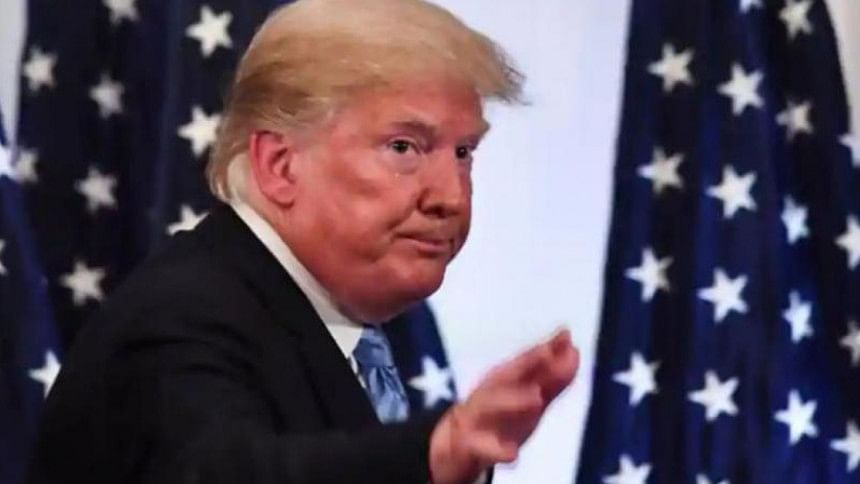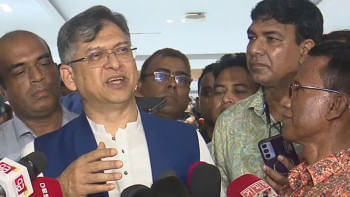US Midterms: Donald Trump risks becoming a lame-duck President

America on November 6, 2018 went to polls to elect a new Congress, at a time when Donald Trump is in the middle of his Presidential tenure. It was a judgment on whether Trumpism is an anomaly or a reflection of modern America. Trump himself said that it "is a referendum about me". In many ways the US Midterm Election result is bad news to Donald Trump, but he did not acknowledge or understand the import of the results and tweeted that it was "tremendous success". The election has delivered him a divided Congress. Election results reflect American polity is now deeply divided and polarised, where white supremacists, bigots and racists hate non-white, non- Christians and immigrants.
The Democrats won 223 seats (218 needed for majority) in the 435-seat House of Representatives. While in the 100-seat Senate the Republicans retained their thin majority with 51 to 46 seats. When populist Trump entered the White House in January 2017, both the House and Senate were dominated by the Republicans. Clearly the era of unified rule for Donald Trump and the Republicans seems to be over.
The elections were also held in 36 states for new Governors. Democrats won 7 states improving their tally from 16 to 23. According to exit polls there was a surge of women voters at the ballot most of them voting for Democrats. This election has produced 96 women legislators for the House, the highest so far. For the first time two Muslim women and two Native American women were elected. House minority leader Nancy Pelosi is likely to become the next leader of the House. Speaking to the press Pelosi emphasized the need for bipartisan policy to run the administration but said that Democrats victory meant "restoring the constitution's checks and balances to the Trump administration".
Trump held 30 rallies in the past two months which he used to instil fear among the voters. His divisive battle cry was immigration—build the wall; close America's doors; stop the Hispanic caravan of alien invaders, etc. He warned that Democrats will turn America into a socialist hellhole. Psephologists say that Trump's fear strategy actually helped in stemming the "Blue" (Democrat) tide against the Republicans. President Obama slammed Trump's "constant fear-mongering". At the press conference Trump boasted that the candidates he campaigned for have won. He reminded the press that American economy was doing wonderfully under him and people have got financial and physical security.
Political pundits are predicting two possible scenarios for the two remaining years of Trump presidency.
First, bipartisanship may devolve into partisan confrontations between the House and Oval Office. The powerful Democratic opposition in the House will be chairing 20 standing committees—oversight, appropriation, judiciary, etc.—and may create gridlocks and conflicts with the White House throwing away Trump's agenda. The confrontations between the House and the Senate may also become more prominent and disrupt functions of the administration.
At the chaotic press conference on November 7, President Trump indicated that such a scenario is possible. And in that case as a better player he will play the game and blame the Democrats for stalling the government. Many have indicated that the House will most likely push for making public Donald Trump's tax returns, which he did not do since assuming the presidency. Several reports suggest that Democrats are preparing to "conduct independent, fact-based, and credible investigations of the Trump administration". The Democrats may also be tempted to move an impeachment bill against Donald Trump, which has oft been repeated in Democratic circles. The Democrats will no doubt have more say in Trump's foreign policy.
The other unpredictable area for Donald Trump is the Senate, which may not always side with him on every issue that he would like to push. In such situations Trump may take recourse to Executive Orders—but those may not always get Supreme Court's approval, as has happened in the past.
The second scenario is a more bipartisan approach to government business. That would require Trump to be more sober and predictable. The Democrats may realise that stalling tactics may make it unpopular and jeopardise its 2020 presidential prospects. Democrats may not challenge the president, and instead go along with him as much as possible and try to project a credible candidate for the next presidential election. Trump warned that partisan politics will damage the Democrats and said that there were a number of issues on which the two parties can cooperate. In the past Trump had derided Nancy Pelosi but at the press conference he surprisingly had some friendly comments for Pelosi, saying that it was possible to have a bipartisan approach to run the government. "It really could be a beautiful bipartisan relationship", remarked Trump.
During the election campaign both President Trump and former President Obama campaigned to boost their respective party candidates. Domestic issues such as immigration, healthcare, economy, and gun control dominated the rallies. Trump's Foreign Policy did not seem to have much effect on the voters.
At the press conference when asked who would be Trump's running mate in 2020, the President announced that it would be Vice President Mike Pence. With that announcement Trump has actually set off his bid for a second term in office. Surprisingly the Democrats are still wrangling about a winnable candidate and a strategy to beat Trump in 2020.
The newly constituted House of Representative will serve for two years and hold its first session on January 3, 2019. How the next two years unfold will be interesting to watch. In all likelihood with frequent Congressional gridlocks Donald Trump may be turned into a lame-duck President. However, wily Trump's main slogan "Make America Great Again" shall keep his support-base united which will keep Trumpism afloat at least until the next presidential election in 2020.
Mahmood Hasan is a former Ambassador and Secretary





Comments